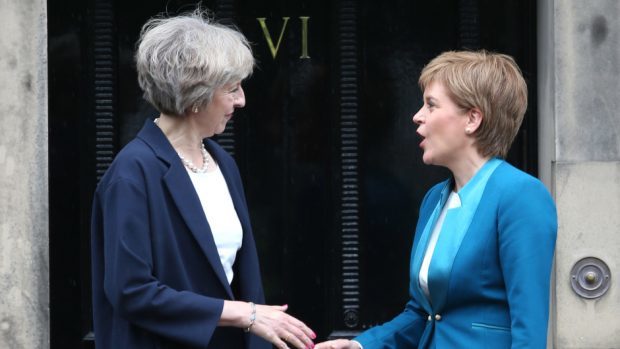The Press and Journal’s Westminster correspondent Lindsay Razaq reflects on Theresa May’s first Tory conference.
Theresa May, the formerly reluctant Remainer, is now fully comfortable with Brexit.
There has been a sea change.
Because the prime minister has gone from giving very little away to pinning her colours firmly to the mast.
She has embraced Brexit and she’s wearing it, owning it.
Her transformation was one of the most notable aspects of the Conservative Party conference.
Also significant was the very deliberate pitch in her speech to voters who backed leaving the EU in June.
Trying to tap into the anti-establishment sentiment made manifest by the referendum result, she told them she understood the “quiet revolution” of Brexit was about more than dissatisfaction with Europe.
As well as Ukip voters, she will hope her message was heard by the Labour-backing (at least in England) working classes, many of whom also voted to leave.
It wasn’t subtle. Her speech was peppered with references to “ordinary, working people”.
And her sack even contained a number of policies – particularly plans to put workers on company boards and a sober warning to “tax dodgers” – that wouldn’t have looked out of place in a Corbyn manifesto.
So she’s in the process of dragging her party significantly to the right, while touting for traditional left-wing voters.
It seems an odd juxtaposition, but one that suggests Mrs May senses the middle ground has shifted, hence her bid for the “new centre” and a clean break from David Cameron’s regime.
“A change is going to come,” was her repetitive pledge.
Another of the conference’s inescapable messages was the prime minister’s oft-repeated commitment to the “precious” UK union.
Her Brexit speech on Sunday left no room for doubt – Scotland will leave the EU with the rest of the UK, there will be no opt-out, no veto.
Predictably, this provoked outrage from Nicola Sturgeon, who accused Mrs May of going out of her way to deliver the message Scotland’s voice didn’t matter.
The first minister was equally vehement yesterday, saying the Scottish Government wanted no part in her “ugly vision”.
But the critical reception – Mrs May was condemned by Labour and the Lib Dems alike – will not faze the Tory leader.
She didn’t make her bed – her predecessor must take credit for that – but she’s now very carefully and deliberately choosing to lie in it.
